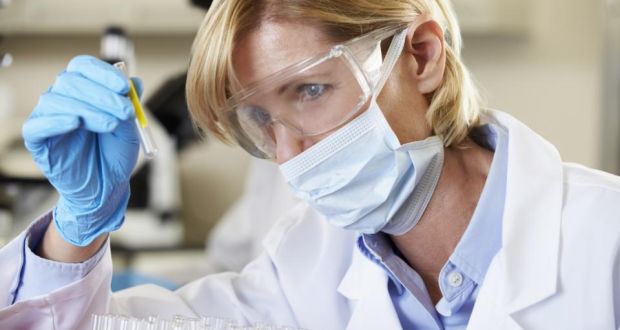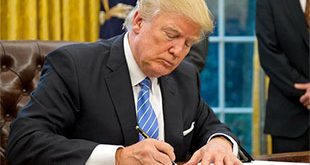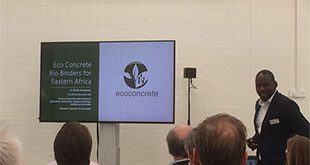
At the youngest age in elementary school, girls should be encouraged to study math and science
COMMENT | THE INDEPENDENT | Two years ago, the United Nations designated February 11 the International Day of Women and Girls in Science. As the 2018 commemoration approached, it was worth reflecting on female scholars’ countless contributions to science and technology.
But even more important is to consider why the UN acted in the first place. Simply put, women have long suffered in their pursuit of science careers, and the global scientific community must recommit to making them full partners in the quest for human knowledge.
Achieving gender parity would yield an enormous payoff for scientific discovery. Last year marked the 150th anniversary of the birth of Poland’s Marie Curie, one of the greatest scientists of all time. Curie was the first woman to win a Nobel Prize, the only woman to win two, and the only person to do so in two different sciences: physics in 1903 and chemistry in 1911.
Curie faced immense gender barriers during her career. In 1891, having been blocked from studying or working at universities in Poland, she joined the Sorbonne in Paris. Working with her husband, Pierre Curie, she conducted groundbreaking research on radiation. But when their work was nominated for the 1903 physics prize, her name was omitted. After her husband complained, the Nobel committee made an exceptional concession, and she was added to the award (she and her husband shared it with the French physicist Henri Becquerel).
Much has changed since then, and gender equality in the sciences has greatly improved. For example, the L’Oréal-UNESCO for Women in Science awards program, which honors female researchers working in the life and physical sciences, is now in its 20th year. Past winners have included experts in everything from quantum electronics to molecular biology (one of us, Vivian Wing-Wah Yam, won the prize in 2011).
Nonetheless, gender parity in the sciences remains a distant goal. Evidence suggests that bias is endemic in nearly every scientific field, and that institutional discrimination is still crippling careers and impeding scientific innovation.
The gender gap in science begins at a young age. As early as elementary school, girls are discouraged from pursuing careers in math and science, and this bias continues into university, where fewer women study for PhDs, hold research positions, or join the faculty. Globally, less than 30% of the world’s researchers are female.
Even for women who do get on the academic ladder, the climb is slowed by inadequate opportunities for grants, promotions, and leadership. One measure of this is seen in publication rates. Producing scholarly papers is critical for career advancement, but studies show that women publish fewer articles than their male colleagues, are less likely to be primary authors, and rarely serve as reviewers.
Worse, sexual harassment is prevalent in science-related academia and industry. Like many other professions, the science community needs to do more to address the issue in a meaningful way.
The cumulative effect of this discrimination is to rob the world of talented female scientists. Even among those with science-related degrees, fewer women than men remain in their field of study or are ever recognized for their work. Of the 599 Nobel Prizes awarded in the sciences since 1901, only 18 have gone to women, just 3% of the total.
Major changes – from grade schools to technology companies – are needed to build gender parity into science-related fields. Easy fixes can target individual industries. For example, bringing more female editors into the field of science publishing could raise the percentage of women appearing in peer-reviewed publications.
Other adjustments would have broader reach. A recent study of grant programs in Canada found that when referees are trained to recognise gender discrimination, funding outcomes naturally rebalance. Launching similar training efforts in other countries could have a profound impact on how science grants are awarded – and how many are awarded to women.
And yet, while individual tweaks can be beneficial, the world’s scientific community must move beyond piecemeal solutions to tackle gender bias in a more holistic way. Academic institutions, research centers, and science-related employers must commit to diversifying their bases of recruitment, and improve efforts to recognize and respond to discrimination. Moreover, through improving cultural competencies (the ability to recognize and respond to biases), organizations can create environments that are equitable and physically, spiritually, socially, and emotionally safe for both women and men.
Achieving gender equity, diversity, and inclusion in the sciences will require cooperation across many sectors. It will also take time. But, 150 years after Marie Curie’s birth, it is clear that action is long overdue.
That is why this February 11, as the world observed the third International Day of Women and Girls in Science, scientists from across the disciplines needed to take a moment to reflect on how far their female colleagues have come, and to remember how far we still have to go.
*****
Stephen Matlin is an adjunct professor at the Institute of Global Health Innovation, Imperial College London. Vivian Wing-Wah Yam is Professor of Chemistry and Energy at the University of Hong Kong. Henning Hopf is a professor in the Institute of Organic Chemistry, Technische Universität Braunschweig. Alain Krief is Executive Director of the International Organization for Chemical Sciences in Development, Emeritus Professor in the Chemistry Department at Belgium’s Namur University, and an adjunct professor in the HEJ Research Institute of Chemistry, University of Karachi. Goverdhan Mehta is University Distinguished Professor and Chair in the School of Chemistry at the University of Hyderabad.
Copyright: Project Syndicate, 2018.
 The Independent Uganda: You get the Truth we Pay the Price
The Independent Uganda: You get the Truth we Pay the Price



